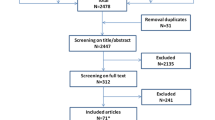Abstract
Introduction: Every year approximately 17,000 people in the UK are off work through sickness for six or more weeks. Only fifty percent of those off for six months return to work. Methods: A systematic review was conducted to identify potential risk factors for non-return to work within six to 26 weeks or job loss in adult workers with respiratory ill-health. Twelve databases, citation and author lists and cited references were searched. All abstracts and papers were double read and quality assessed. Main outcome measures were return to work and employment status. Results: Five studies of variable methodological quality were identified, all focussing on asthma, occupationally induced or not, with two single studies also covering chronic obstructive pulmonary disease or rhinitis. In the single study of a general working population, blue collar workers having either asthma or chronic obstructive pulmonary disease, were from two to six times less likely to return to work quickly compared with office workers. Overall, unemployment was high with becoming unemployed three times higher in those with all forms of asthma compared with rhinitis. Also, in those with occupational asthma, job loss was more likely if working in smaller companies and being less well educated. Conclusions: Evidence on predictors for non-return to work or job loss with respiratory ill-health in a general working population is limited. Yet without an understanding of these, interventions to reduce the further step to long term disability cannot be designed and implemented.

Similar content being viewed by others

References
ACT DE. Report of the Sub-group of ACDET on Job Retention. London: DfEE, DSS and DoH, 1999.
Burchardt T. Employment Retention and the Onset of Sickness or Disability: Evidence from Labour Force Survey Longitudinal datasets. In-house Report 109. London: Department for Work and Pensions, 2003.
Hunt P. Time to get down to business. London: Department for Work and Pensions. http://www.dwp.gov.uk, 2005.
DTLR. Annual report on occupational health and safety. 2000–2001. http://www.dwp.gov.uk.
Crofts JP, Joseph CA, Zambon M, Ellis J, Fleming DM, Watson JM. Influenza surveillance in the United Kingdom: October 2002to May 2003, http://www.hpa.org.uk, 2003
Cabinet Office. Analysis of sickness absence in the civil service. London: Aon Limited 2004.
Halbert RJ, Isonaka, S, George D, Iqbal, A. Interpreting COPD prevalence estimates: what is the true burden of disease? Chest 2003;123:1684–92.
European Community Respiratory Health Survey. Variations in the prevalence of respiratory symptoms, self-reported asthma attacks, and use of asthma medication in the European Community Respiratory Health Survey (ECRHS). Eur Respir J 1996;9:687–95.
Asthma UK. The Asthma Audit. http://www.asthma.org.uk, 2004.
Blanc PD, Toren K. How much adult asthma can be attributed to occupational factors? Am J Med 1999;107:580–87.
Peters J, Wilford J, MacDonald E, et al. Literature review of risk factors for job loss following sickness absence. In-house Report 1222. London: Department for Work and Pensions http://www.dwp.gov.uk/asd/ 2003. 2003;1–318.
Ameille J, Pairon JC, Bayeux MC, et al. Consequences of occupational asthma on employment and financial status: a follow-up study. Eur Respir 1997;10:55–8.
Gassert TH, Hu H, Kelsey KT, Christiani DC. Long-term health and employment outcomes of occupational asthma and their determinants. JOEM 1998;40:481–91.
Alexopoulis EC, Burdorf A. Prognostic factors for respiratory sickness absence and return to work among blue colour workers and office personnel. Occup Environ Med 2001;58:246–52.
Blanc PD, Trupin L, Eisner M, et al. The impact of asthma and rhinitis: Findings from a population-based study. J Clin Epidemiol 2001;54:610–18.
Larbanois A, Jamart J, Delwiche J-P, Vandenplas O. Socioeconomic outcome of subjects experiencing asthma symptoms at work. Eur Respir J 2002;19:1107–13.
Franche RL, Cullen K, Clarke J, MacEachen E, Frank J, Sinclair S, Reardon R. Workplace-based return-to-work interventions: a systematic review of the quantitative and qualitative literature. Toronto: Institute for Work and Health; 2004.
Cannon J, Cullinan P, Taylor AN. Consequences of occupational asthma. BMJ 1995;311:602–3.
Ross DJ, McDonald JC. Health and employment after a diagnosis of occupational asthma: a descriptive study. Occup Med 1998;48:219–25.
Marabini A, Dimich WH, Kwan SY. Clinical and socioeconomic features of subjects with red cedar asthma. A follow-up study. Chest 1993;104:821–24.
Yelin E, Henke J, Katz PP, Eisner MD, Blanc PD. Work dynamics of adults with asthma. Am J Ind Med 1999;35:472–80.
Axon, Beach JR, Burge PS. A comparison of the characteristics of patients with occupational and non-occupational asthma. Occup Med 1995;45:109–11.
Bacon J. Moving between sickness and unemployment. Labour Market Trends 2002;110:195–204.
McDonald JC. The estimated workforce served by occupational physicians in the UK. Occup Med 2002;52:401–6.
Man WD-C, Polkey MI, Donaldson N, Gray BJ, Moxham J. Community pulmonary rehabilitation after hospitalisation for acute exacerbations of chronic obstructive pulmonary disease: randomised controlled trial. BMJ 2004;329:1209–14.
Waddell, G. Burton AK, Main CJ. Screening to identify people at risk of long-term incapacity for work: a conceptual and scientific review. London: The Royal Society of Medicine Press Ltd; 2003.
Acknowledgements
The authors acknowledge the literature searching advice and support provided by A. Booth, senior lecturer and head of Information Resources, ScHARR and other research staff. Conpeting interests: None. Funding: The systematic review formed part of a larger programme of work funded by the Department for Work and Pensions, UK.
Author information
Authors and Affiliations
Corresponding author
Rights and permissions
About this article
Cite this article
Peters, J., Pickvance, S., Wilford, J. et al. Predictors of Delayed Return to Work or Job Loss with Respiratory Ill-Health: A Systematic Review. J Occup Rehabil 17, 317–326 (2007). https://doi.org/10.1007/s10926-007-9072-5
Received:
Accepted:
Published:
Issue Date:
DOI: https://doi.org/10.1007/s10926-007-9072-5



